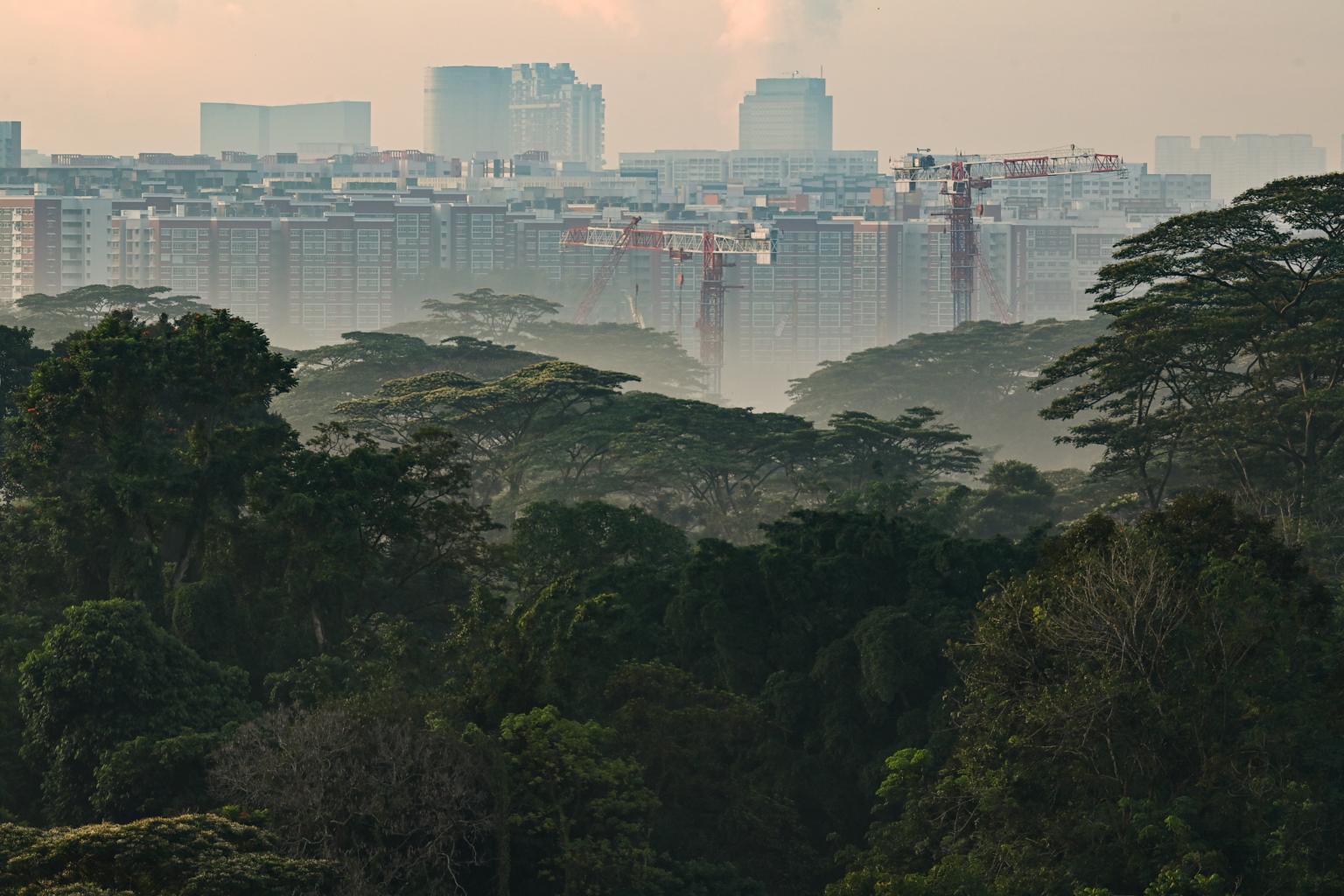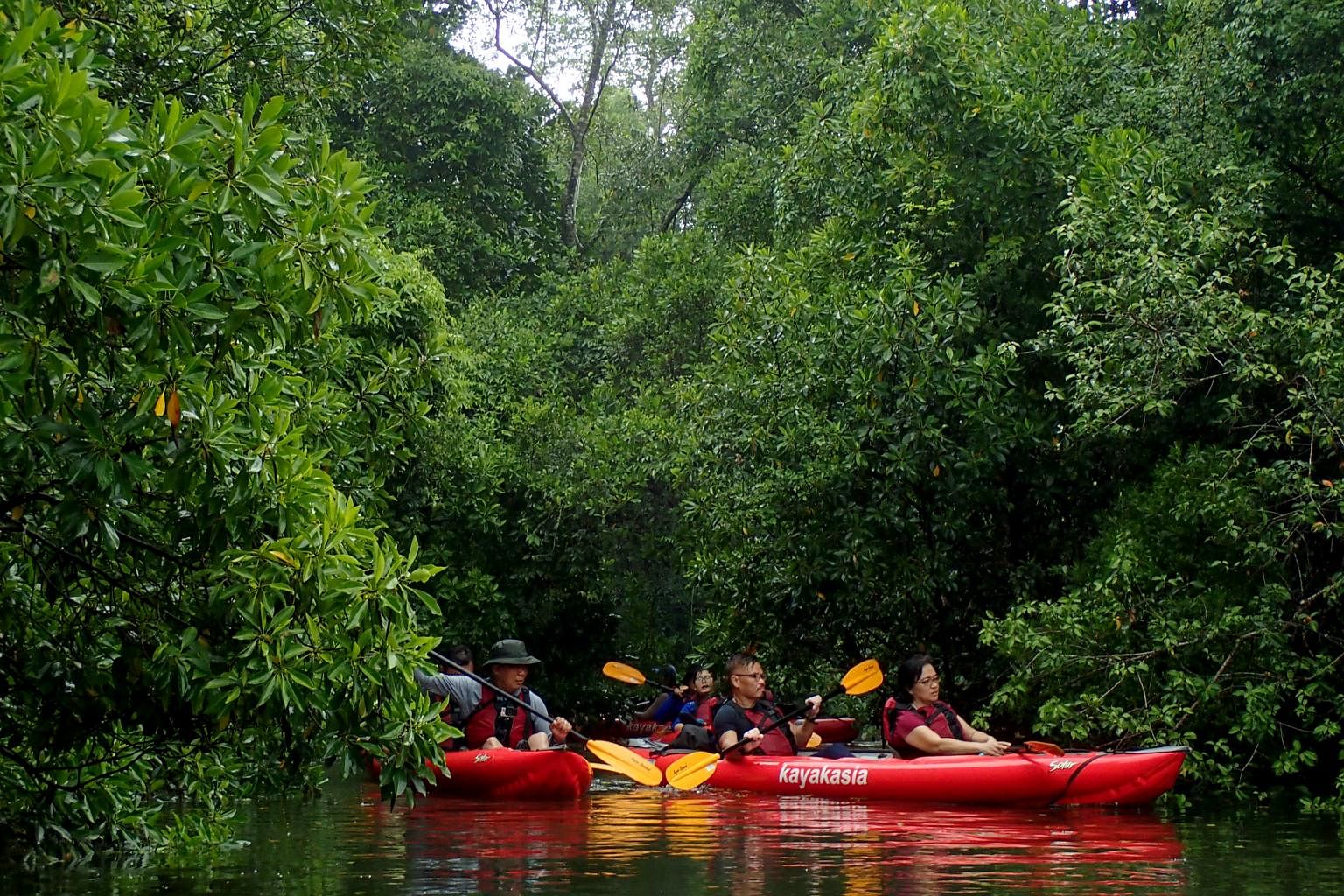Budget debate: What is S'pore doing to meet its sustainability targets?
Sign up now: Get ST's newsletters delivered to your inbox

The targets under Singapore's Green Plan 2030 will put the country in a better position to meet its climate goals.
ST PHOTO: LIM YAOHUI
Follow topic:
SINGAPORE - On Tuesday (March 8), five ministries updated Parliament on their progress towards meeting the targets set out under the Green Plan 2030, Singapore's blueprint for a more sustainable future. The targets will put the country in a better position to meet its climate goals. Gena Soh and Shabana Begum highlight some of them.
1. Singapore's new emissions targets

The aim is to have planet-warming emissions reach net zero by or around the middle of the century.
To achieve this goal, the carbon tax will be increased from the current $5 per tonne of emissions to between $50 and $80 by 2030. This aims to give a clear signal to businesses to reduce their emissions.
2. Green economy

A new sustainability research institute on Jurong Island will focus on ways to reduce the industrial sector’s carbon footprint, which accounts for about 60 per cent of the nation’s total emissions.
The country established a $3 billion Multicurrency Medium Term Note Programme and a Green Bond Framework to catalyse the flow of capital towards sustainable infrastructure projects, such as the Tuas Nexus Integrated Waste Management Facility.
An $80 million funding initiative will squeeze value from waste streams.
A $25 million research programme will advance the science of marine climate change and address the challenges faced by coastal and marine environments.
3. Green government and citizenry

As at last December, $6.6 million from the $50 million Singapore Eco Fund had been doled out to support 105 ground-up projects for the environment.
The public sector aims to have its emissions peak in 2025.
Sustainability is a key consideration in government tenders, such as for event venues and accommodation, as well as public waste collection.
4. City in nature

More than 320,000 trees have been planted across the island since the launch of the OneMillionTrees movement in 2020.
Several new nature parks, such as Mandai Mangrove and Mudflat, are being developed. The new parks will total about 180ha. This is to meet the aim of having 200ha of new nature parks by 2030.
5. Sustainable living

From the middle of next year, major supermarkets will start charging shoppers at least five cents per disposable bag to reduce excessive consumption.
Some 300,000 smart water meters will be rolled out in new and existing residential, commercial and industrial premises by the end of next year.
An Eco Stewardship Toolkit, which includes resources to support schools in their sustainability efforts, is being developed.
At least 20 per cent of all schools are to be carbon neutral by 2030, with about 75 per cent of schools completing solar panel installations by 2025.
6. Resilient future

Longer leases for land and sea farms will provide more certainty for farmers and facilitate investments in yield-improving technology.
The scope of the Agri-food Cluster Transformation Fund will be expanded, enabling farmers to tap higher co-funding for technologies to produce other food types, such as fruiting vegetables, mushrooms and shrimps.
To adapt to rising sea levels, three coastal adaptation plans are being formulated for various coasts and reservoirs.
7. Energy reset

As at the third quarter of last year, 561.8 megawatt-peak of solar capacity had been installed. This is about a quarter of the 2030 target of having at least 2 gigawatt-peak of installed solar capacity.
To date, 2,700 HDB blocks have solar panels installed.
As at last year, $37 million was awarded to four firms under the first Genco Energy Efficiency Grant Call, to reduce emissions from power generation firms.
The country aims to reduce peak land transport emissions by 80 per cent, by or around 2050.
At least three charging points will be installed in nearly 2,000 HDB carparks over the next three to four years.
Half of public buses and taxis are to be electric by 2030.
More than 49 per cent of buildings, by gross floor area, have been greened so far. The aim is to green 80 per cent of buildings by 2030.

